Lentils are a type of legume native to the Middle East and have been cultivated for thousands of years. They are known for their small, lens-shaped seeds, a food source and a popular ingredient in many dishes. Lentils are nutritious and affordable food high in protein, fiber, and various nutrients, including iron, folate, and potassium. They are also low in fat and calories, making them a healthy choice for people looking to manage their weight.
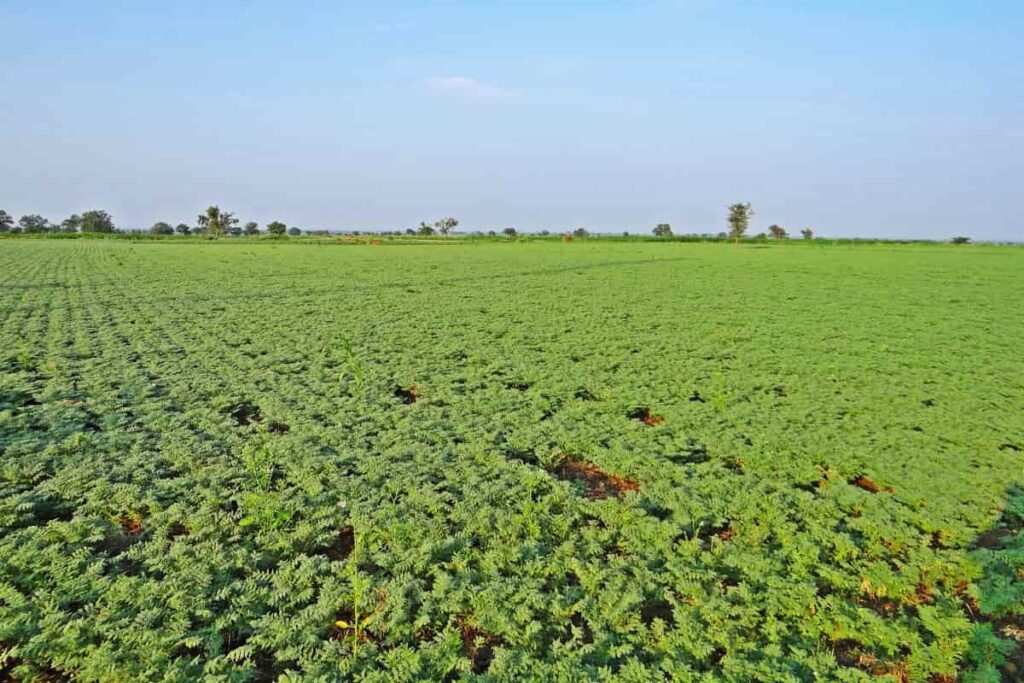
Lentils are high in both carbohydrates and protein. It is a valuable human food, mostly consumed as dry seeds (whole, seed, and split) in the Indian subcontinent. It is mainly consumed as ‘Dal’ by removing the outer skin and separating the cotyledons, snacks, soup preparation, etc. It is simple to prepare and digest, with a high biological value; thus, it is also referred to as a patient. Cattle feed is from dry leaves, stems, and empty and broken pods.
Lentil farming practices
About Lentil
Lentil is a member of the legume family and is an annual plant that grows to a height of about 20-60 cm. The plant has a taproot system and produces small, delicate, blue-green leaves arranged in pairs along the stem. Lentil plants produce small, colorful flowers that are typically purple, pink, or white. The flowers are followed by pods that contain the seeds. Lentil seeds are small, round, and lens-shaped, hence the name of the plant. They are in a variety of colors, including brown, green, black, and red.
Climate and soil requirement of Lentil
Lentils are a cool-season crop that can be grown in various climates. They can tolerate frost and light freezes but do not tolerate extreme heat or prolonged drought. In general, lentils prefer well-draining soil and require moderate moisture during their growing season. It requires cold temperatures during vegetative growth and warm temperatures when it matures. The ideal temperature for growth is between 18 to 30 degrees Celsius. Lentils are also sensitive to high salinity levels in the soil, so they may not grow well in areas with very high salt levels.
Lentils improve soil physical properties, Lentils can be grown in various soil types, ranging from sand to clay loam, but they thrive in deep sandy loam soils with moderate fertility. A soil pH of around 7 is ideal. Lentils do not tolerate flooding. It is essential to test the soil to determine the nutrient levels and pH and to add any necessary amendments to ensure that the soil is optimal for lentil growth. This may include adding organic matter, such as compost or well-rotted manure.
Varieties of Lentil
Thousands of improved and hybrid varieties are grown worldwide. We may only be able to list some of the varieties here. On the other hand, Pant lentil-406, Pant lentil-639, Pant lentil-8, and IPL 2-3 are improved varieties with higher protein percentages. Contact your local agriculture department to find a high-yielding variety appropriate for your region.
In case you missed it: Growing Spinach Organically in Telangana: Cultivation Practices and Production Guide

Seedbed and sowing of Lentil
Lentils are easy to grow and are a good source of protein, fiber, and other nutrients. To sow lentils, you will need to prepare the seedbed first. Here are some general guidelines for preparing a seedbed for lentils:
- Choose a sunny location with well-draining soil. Lentils prefer a pH range of 6.0-7.0.
- Loose the soil to about 8 inches and remove any weeds or debris.
- If the soil is dry, water it a day or two before sowing to make it easier to work with. One deep plowing should be done on heavy soils, followed by two to three cross harrowing. After harrowing, the field should be leveled by giving a gentle slope to ease irrigation.
- Rake the soil to create a smooth, even surface.
- Sow the lentil seeds about 3 to 4 centimeters in depth.
- Cover the seeds with soil and lightly tamp them to ensure good soil-to-seed contact.
- Water the seeds lightly to help them germinate.
Lentils typically germinate in about 7-10 days and are ready to harvest in about 100-110 days. Rotating your lentil crops helps to prevent pests and diseases in the soil.
Seed rate of Lentil
The seed rate depends on the variety of lentils you are planting, the size of the seeds, and the field conditions.
- Use a seed rate of about 45 – 60 kg/ha for large-seeded varieties.
- Use a seed rate of about 40 – 45 kg/ha seed rate for small-seeded varieties.
It’s important to note that these are just rough guidelines. You may need to adjust the seed rate based on your specific circumstances. Factors that can affect the seed rate include the soil type, the fertility of the soil, the intended use of the lentils (e.g., for human consumption or animal feed), and the expected yield. It’s better to consult with a local extension agent or other experts to determine the appropriate seed rate for your particular situation.
Seed treatment of Lentil
- Soak the seeds in water for 8-12 hours before planting. This will soften the seed coat and increase germination.
- Treat the seeds with a seed treatment product to protect them from pests and diseases. There are many different seed treatment products available, including those that contain fungicides and insecticides.
- Seed treatment can also help to improve the overall vigor of the seed, which can lead to higher yields.
- After treatment, allow the seeds to dry before planting.
- When planting the seeds, follow the recommended planting depth and spacing for your specific variety of lentils.
In case you missed it: How to Grow Pigeon Pea/Red Gram/Toor Dal: Cultivation Practices and Production Management
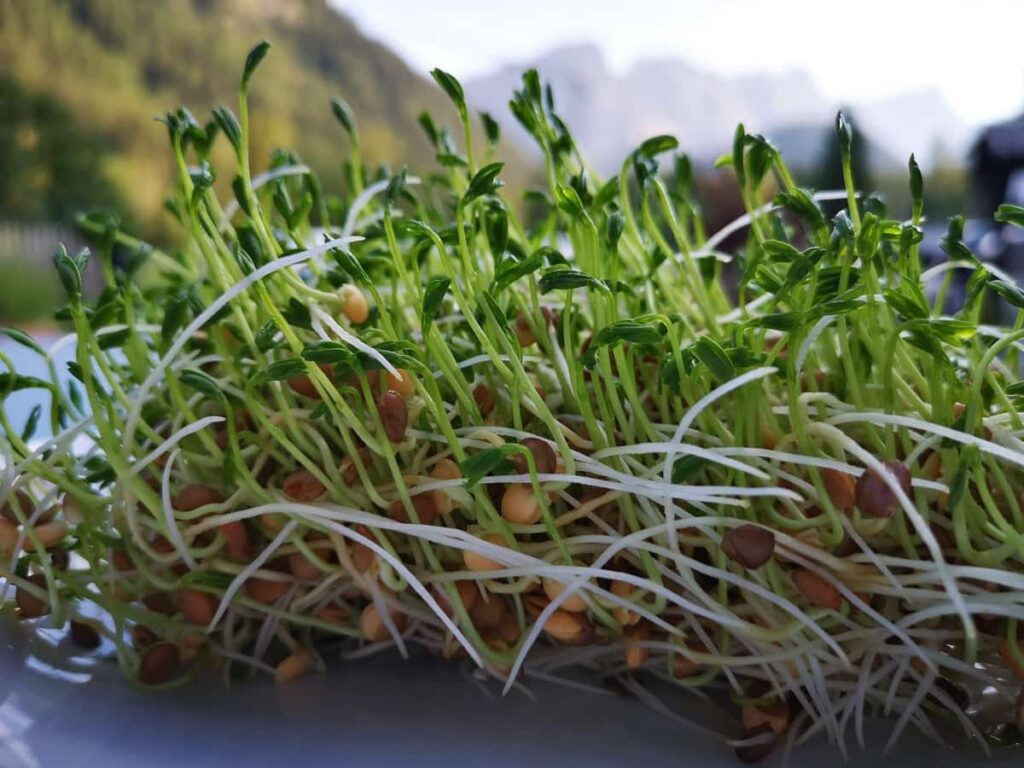
By following these steps, you can ensure that your lentil seeds get off to a strong start and have the best chance of producing a healthy and productive crop.
Irrigation in Lentil
Lentils are a drought-tolerant crop, requiring some irrigation to ensure optimal growth and yield. The first irrigation should be given 40-45 days after planting, and the second at the pod-filling stage. The most vulnerable stage to moisture stress is pod formation, followed by flower initiation. It’s essential to monitor the moisture levels in the soil throughout the growing season and adjust the irrigation schedule as needed. Overwatering can lead to reduced yield and increased disease risk, while underwatering can stress the plants and reduce yield.
Plant-nutrient management
Lentils are legumes that can fix nitrogen from the air with the help of rhizobia bacteria. Lentils grow well with low fertilizer input, though phosphorus, nitrogen, potassium, and sulphur can be used in nutrient-deficient soils. Nitrogen is typically 20 kg; in medium to low fertile soils, 40 kg of phosphorus and 20 kg of sulphur are applied per hectare.
Weed control of Lentil
Weeds can compete with lentil plants for water, nutrients, and light and can reduce crop yield. You can use mechanical, cultural, and chemical methods to control weeds in lentils. Here are some suggestions:
- Mechanical control: It includes hand weeding, hoeing, and cultivating to remove weeds. Two manual weedings should be performed, one at 25-30 days and another 45-50 days after sowing.
- Cultural control: This includes crop rotation, mulching, and proper irrigation to help suppress weed growth.
- Chemical control: If mechanical and cultural methods are insufficient, you can use herbicides to control weeds in lentils. There are several herbicides available that are specifically formulated for use on lentils. Follow the manufacturer’s instructions and observe all safety precautions when using any herbicide.
The most effective weed control strategy will depend on the specific weed species present in your field and the stage of growth of the lentil plants. Consult with a local extension agent or other experts for guidance on the best weed control methods for your particular situation.
In case you missed it: Role of Plant Breeding and Biotechnology: Crop Improvement in Agronomic Crops and Horticulture Crops
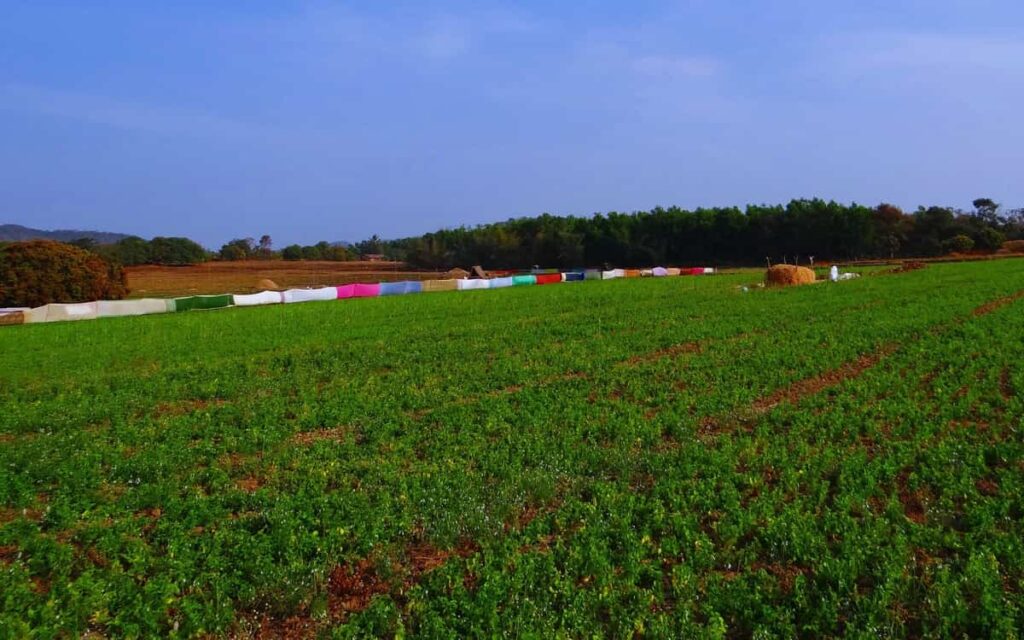
Disease management of Lentil
Lentils, like all plants, are susceptible to various diseases. Some common diseases that can affect lentils include:
- Ascochyta blight: This is a fungal disease that causes dark, sunken lesions on the leaf and stems of lentil plants. It can reduce yield and seed quality.
- Fusarium wilt: It is a fungal disease that causes yellowing and wilting of the leaves and stems of lentil plants. It can reduce yield and seed quality.
- Root rot: It is a fungal disease that causes the roots of lentil plants to become black and rotten. It can reduce yield and kill the plant.
- Rust: This is a fungal disease that causes orange or yellow bumps on lentil plants’ leaves and stems. It can reduce yield and seed quality.
- Virus diseases: Several virus diseases can affect lentil plants, including the lentil mosaic virus, the lentil yellow mosaic virus, and the lentil leaf roll virus. These diseases can cause symptoms such as mottled or distorted leaves, stunted growth, and reduced yield.
To prevent or control these diseases, it is essential to use good agricultural practices, such as rotating crops, controlling weeds, and avoiding planting lentils in areas where the disease is known to be present. In some cases, chemical control measures, such as fungicides or insecticides, may also be necessary.
Pest management of Lentil
- Aphids are small, sucking insects that can transmit viruses and cause deformed growth.
- Cutworms: These are larvae of moths that feed on the stems and leaves of lentil plants, often causing plants to wilt and die.
- Bean weevils: These are small beetles that feed on the leaves and stems of lentil plants and can reduce yield.
- Grasshoppers: These insects can damage lentil plants by feeding on the leaves and stems.
- Thrips: These are small, winged insects that feed on the sap of lentil plants and can cause deformities and reduce yield.
In case you missed it: Fertilizer Schedule for Okra: Organic, Chemical, How and When to Apply
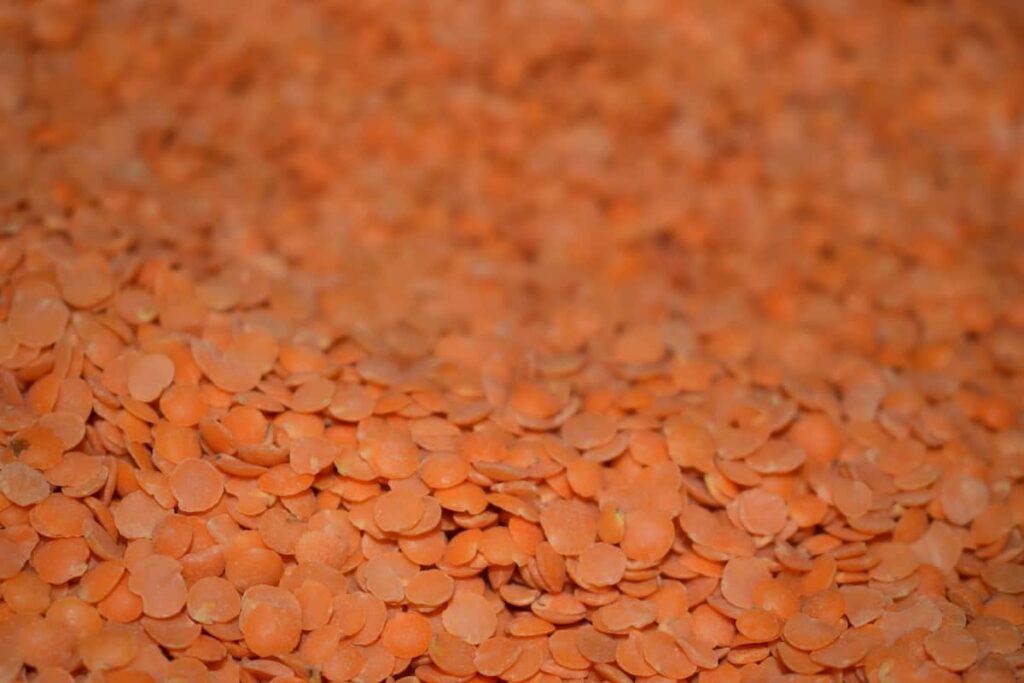
Several biological control methods can be used to control pests in lentil crops, which involve using natural predators or parasites to reduce pest populations. Some examples of biological control methods that can be used to control pests in lentil crops include:
- Use of natural predators: Encouraging the presence of natural predators, such as birds, ladybugs, and lacewings, can help to control pest populations in lentil crops.
- Use of parasites: Introducing parasites, such as wasps, that feed on or lay their eggs on pest insects can help to control pest populations in lentil crops.
- Use of disease: Introducing diseases that affect pests, such as the bacterial disease Bacillus thuringiensis (Bt), can help to control pest populations in lentil crops.
- Use of pest-resistant varieties: Planting lentil varieties that have a natural resistance to pests can help to reduce pest damage to the crop.
- Use of cultural practices: Cultural practices, such as crop rotation, can help reduce pest populations in lentil crops.
It is important to note that biological control methods should be combined with other pest management strategies, such as chemical control measures, to effectively control pest populations in lentil crops.
Harvesting & threshing of Lentil crop
Lentils are usually ready for harvest in about 100-110 days when the plants are fully mature, and the pods are dry and crisp. Leaves begin to fall, and the stem and pod turn brown or straw. The seeds should be hard and have a moisture content of around 15%. If the lentils are allowed to over-ripen, the pods may fall off, and the seeds may crack or shatter if the moisture content falls below 10%.
To avoid these problems, it is crucial to harvest the lentils at the right time. To determine when the lentils are ready for harvest, gently squeeze a few seeds between your fingers. If the seeds are rigid and do not easily break, they are ready to be harvested. You can also check the moisture content of the seeds using a moisture meter or by weighing a sample and drying it until it reaches a constant weight. After the lentils have been harvested and the pods removed, it is crucial to allow the seeds to dry out before threshing.
This can be done by keeping the seeds on a clean, dry threshing floor for 4-7 days. There are several methods for threshing the seeds, including manual threshing and using a bullock- or power-drawn thresher. The goal is to separate the seeds from any remaining plant material and debris. After threshing, the seeds should be sun-dried for 3-4 days to reduce their moisture content to 9-10%. This will help ensure the seeds are dry and ready for storage or use.
In case you missed it: Fertilizer Schedule for Fruits: Organic, Chemical, How and When to Apply
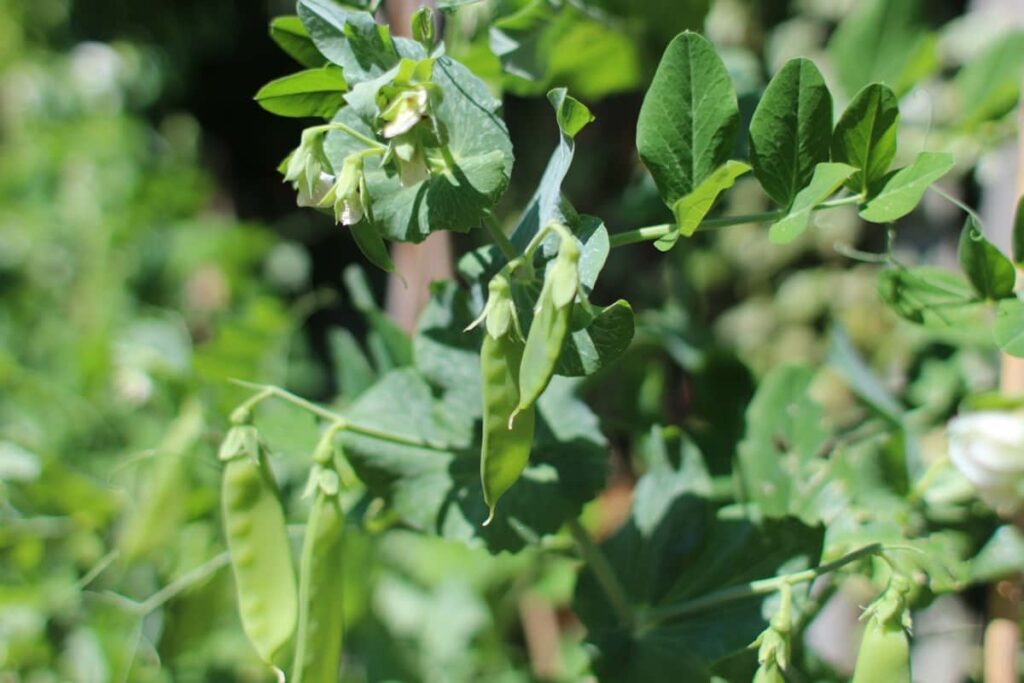
Yield of Lentil per acre
A well-managed lentil crop can produce a good yield. On average, a well-managed crop can yield around 7 to 11 quintals per acre. However, the actual yield will depend on several factors, including the variety of lentils being grown, the growing conditions, and the care given to the plants.
To maximize the yield of your lentil crop, it is essential to plant the seeds in well-draining soil rich in nutrients. Water the plants regularly and provide them with sufficient sunlight. It is also a good idea to rotate your lentil crops and avoid planting them in the same location year after year to help prevent the build-up of pests and diseases. Finally, harvest the lentils at the right time to avoid over-ripening and seed cracking.
- Crops Grown in Summer Season: Best Choices for Summer Gardening
- Organic Pest Control for Tomato Farming
- How to Maximize Sheep Farming Profit
- Broccoli Varieties: Choosing the Right Cultivars for Your Farm
- How to Raise Pigs in Your Own Backyard: A Comprehensive Guide
- Budget Friendly Sheep Shed Ideas: Cheap and Low-Cost Tips
- How Much Do Cattle Farmers Make: Revenue Streams in Cattle Farming
- Management Pests and Diseases in Your Cotton Field
- Sheep Farming Business Plan for Beginners
- Aquaponic Farming at Home: A Step-By-Step Guide
- Profitable Village Farming Business Ideas in 2024
- High-Yield Aquaculture: Fast-Growing Fish for Farming
- Effective Fish Pond Construction Techniques for Beginners
- Irrigation and Water Management in Pineapple Farming
- Blossom to Harvest: Mastering Flowering and Pollination in Papaya Farming
- Pig Fattening Essentials: From Selection to Sale for Beginners
- Raising Wagyu Cattle: A Complete Guide for Premium Beef Production
- Soil Types and Their Water Holding Capacity
- Optimizing Irrigation Schedules for Coconut Groves for Enhanced Yield
- Espresso Your Garden: Coffee Grounds for Healthier Acid-Loving Plants
- The Best Soil Mix for Snake Plants: How to Mix Your Own Snake Plant Soil
- Green Thumb Success: Expert Tips for Cultivating Greenhouse Beans All Year Round
- Bloom All Year Round: The Ultimate Guide to Indoor Hyacinth Care
- Eco-Friendly Gardening: How to Make Liquid Fertilizer from Kitchen Waste
- Ultimate Guide to Grow Anise in Pots: Explore Seed Propagation to Harvesting
- Guide to Raising Chester White Pigs: Discover Breed Facts to Growth Management
- Mastering the Elegance: The Ultimate Guide to Weeping Cherry Tree Care, Planting, and Maintenance
- Ultimate Guide to Planting Garlic in Grow Bags: Growing Strategies for Beginners
- How to Fix Spider Plant Leaf-Related Problems: Natural and Organic Remedies
- 10 Reasons Why Your Tulsi Plant is Shedding Leaves: Home Remedies and Solutions
- Optimizing Growth and Yield: The Advantages of Palm Bunch Ash Fertilizer
- Utilizing Neem Oil Extract as a Natural Pesticide for Hydrangea
- From Soil to Harvest: Various Ways in Which Farmers Can Use AI Tools
- Steps to Encourage and Induce Citrus Flowers: A Comprehensive Guide
- How to Fix Snake Plant Leaf-Related Issues: Natural and Organic Remedies
- Transform Your Garden into a Fragrant Oasis with Raat Ki Rani (Night Blooming Jasmine)
